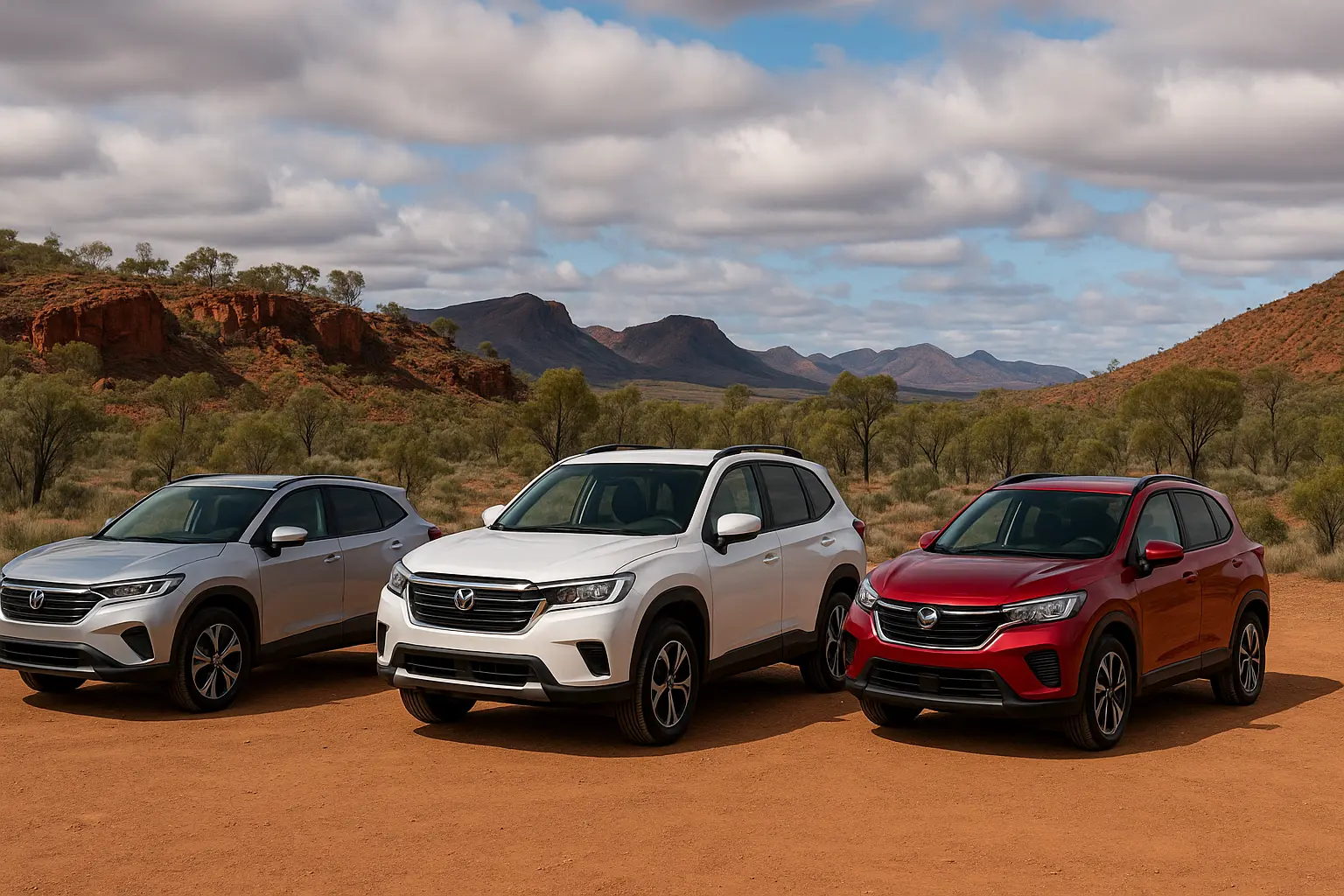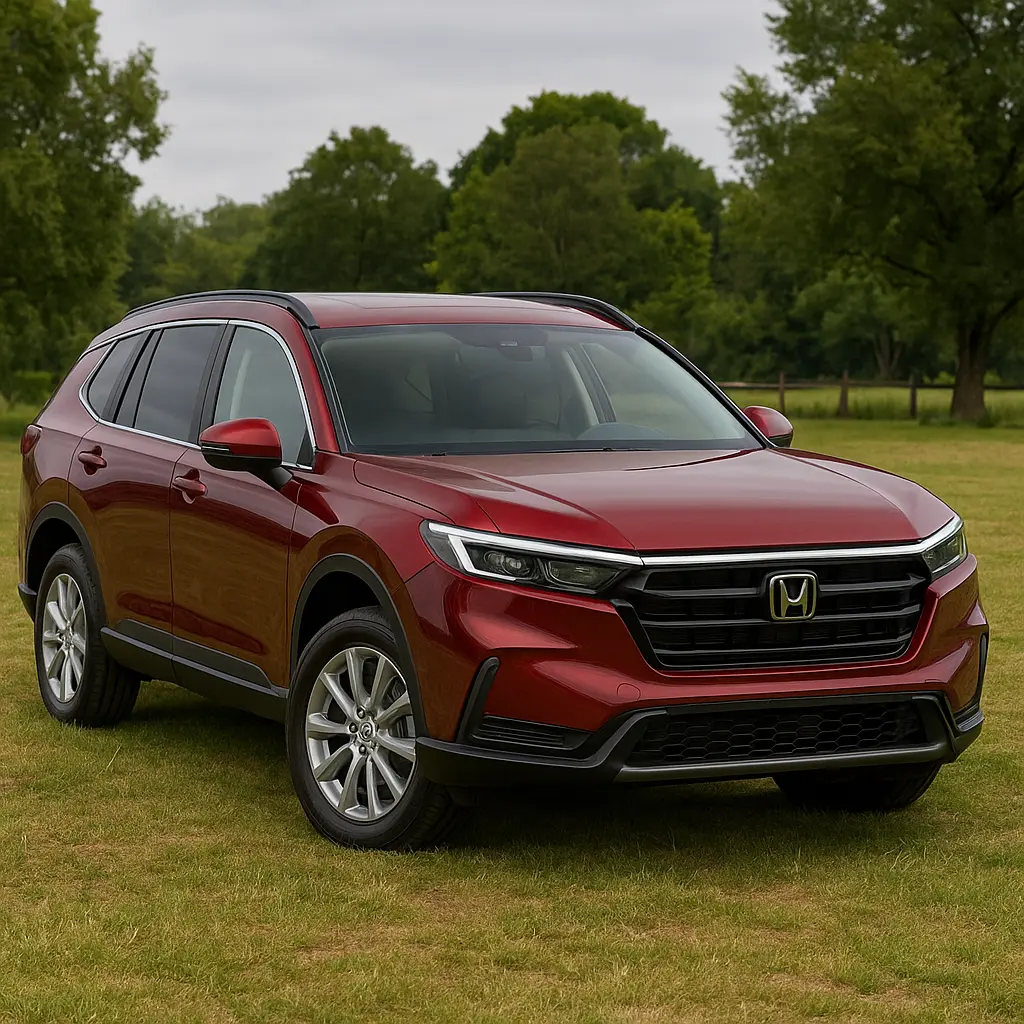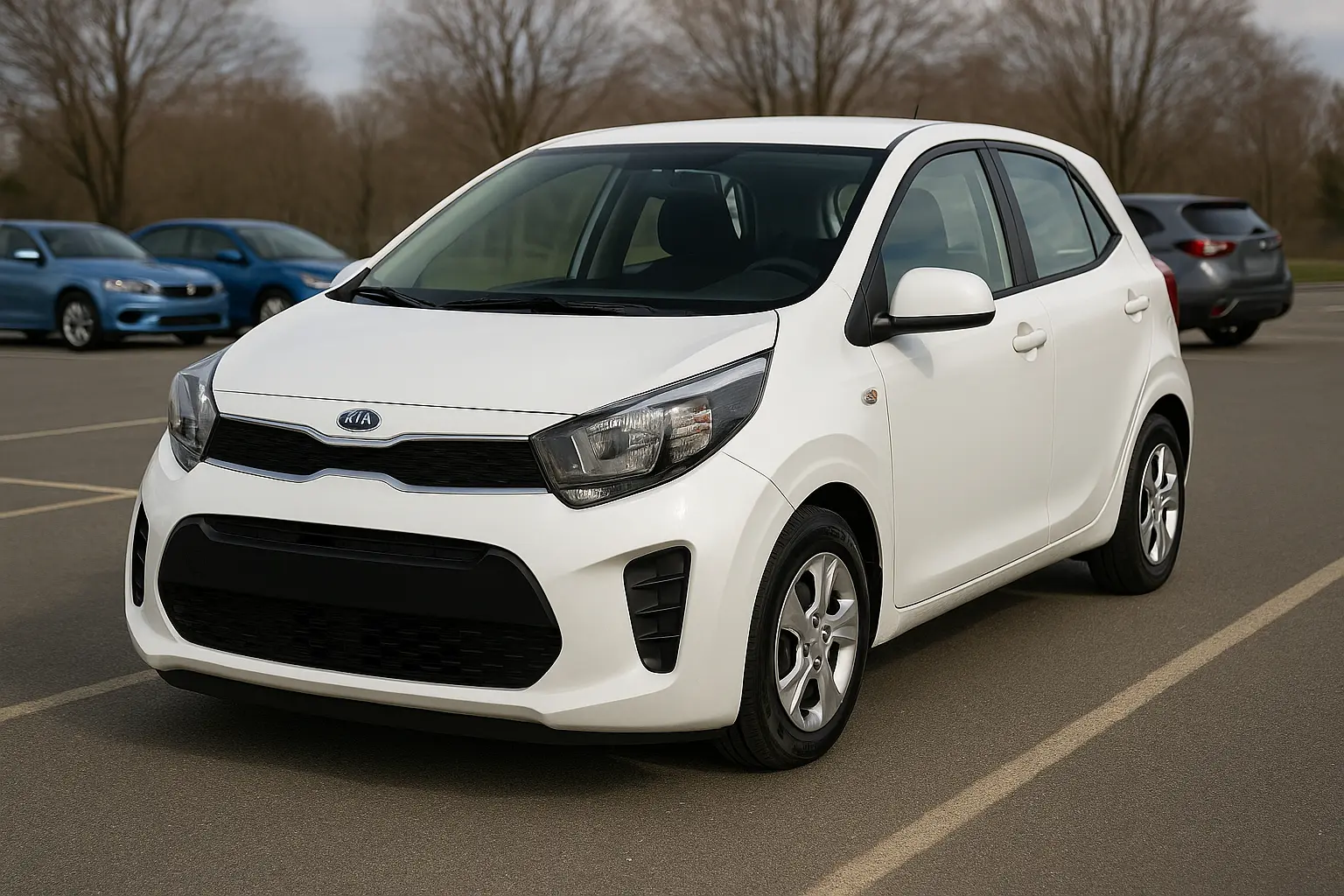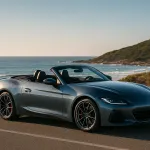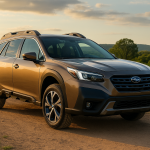Introduction: The Aussie Terrain Challenge
Australia is a vast country with diverse terrains—coastal cities, desert highways, mountain roads, and rugged bush tracks. When buying a car, one of the most overlooked yet crucial decisions is the drivetrain: AWD, 4WD, or FWD. Each system has strengths and limitations that affect how your car performs on different road types and under varied weather conditions.
In this blog, we’ll unpack what these drivetrains mean, how they work, and most importantly, help you choose the right system for your lifestyle, location, and driving needs.
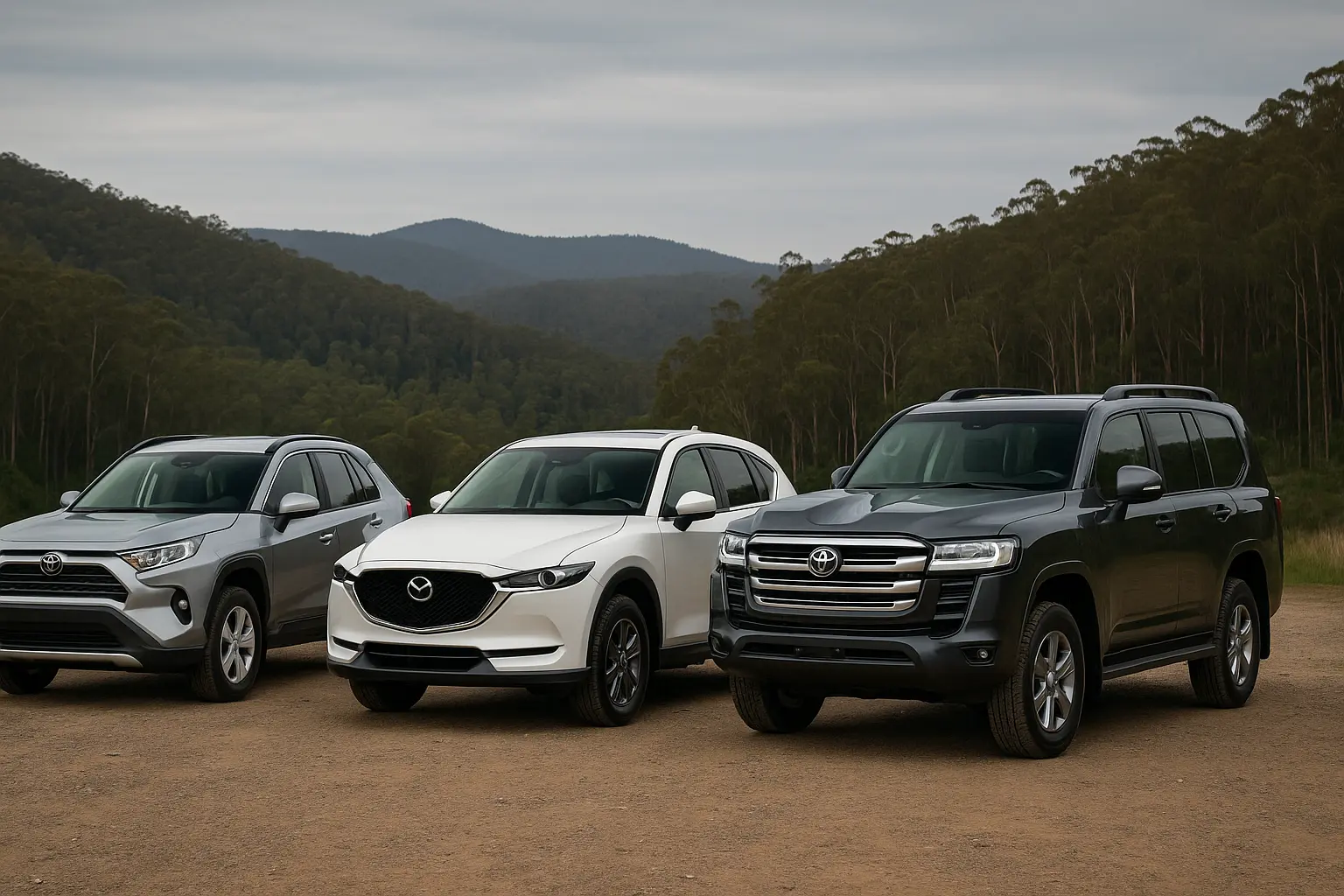
What Is a Drivetrain?
In simple terms, a drivetrain is the system that sends power from the engine to the wheels. The most common types in Australia are:
Front-Wheel Drive (FWD)
All-Wheel Drive (AWD)
Four-Wheel Drive (4WD or 4x4)
Each system delivers power differently and has implications on handling, traction, fuel consumption, and maintenance.
Front-Wheel Drive (FWD): Affordable and Urban-Friendly
How FWD Works
In FWD vehicles, the engine sends power to the front wheels. The front wheels are responsible for both steering and moving the vehicle forward.
Advantages of FWD
Fuel Efficient: Less weight and fewer moving parts mean better fuel economy.
Affordable: Lower production cost translates to cheaper car prices.
More Cabin Space: No need for a driveshaft tunnel increases interior room.
Great for City Driving: Ideal for daily commuting and suburban driving.
Disadvantages of FWD
Limited Off-Road Capability: Not ideal for unpaved or rugged roads.
Less Dynamic Handling: Understeers in sharp corners.
Traction Issues: Slippery or steep terrain can challenge FWD.
Ideal For:
City and suburban dwellers.
Drivers on a budget.
Areas with mild weather and paved roads.
Popular FWD Cars in Australia 2025:
Toyota Corolla
Hyundai i30
Kia Cerato
Mazda3
All-Wheel Drive (AWD): Balanced and Versatile
How AWD Works
AWD systems send power to all four wheels simultaneously, either full-time or on-demand via sensors. Modern AWD systems constantly monitor traction and adjust torque to wheels with the most grip.
Advantages of AWD
Excellent Traction: Performs well in wet, icy, or gravel conditions.
Automatic Engagement: No need for manual activation like traditional 4WD.
Safe for Mixed Roads: Great for transitioning from city to dirt roads.
Stability: Enhances cornering and reduces skidding.
Disadvantages of AWD
Lower Fuel Economy: More components increase weight and drag.
Higher Price Tag: Costlier than FWD vehicles.
Maintenance: More complex system, meaning more expensive servicing.
Ideal For:
Drivers who experience varying weather (rain, mud, light snow).
Families who travel regional highways and country roads.
Weekend adventurers.
Popular AWD Cars in Australia 2025:
Subaru Forester
Mazda CX-5 AWD
Toyota RAV4 AWD Hybrid
Kia Sportage AWD
Four-Wheel Drive (4WD): Rugged and Off-Road Ready
How 4WD Works
4WD typically uses a transfer case and differentials to send power evenly to all four wheels. Most systems are part-time and manually engaged, though modern vehicles offer automatic 4WD modes.
Advantages of 4WD
Superior Off-Road Capability: Built for challenging terrains—sand, rocks, steep climbs.
Towing Power: Excellent torque makes it ideal for trailers or caravans.
Control Over Traction: Manual modes for varying terrain types (low/high range).
Durability: Often paired with rugged chassis and protection.
Disadvantages of 4WD
Expensive: Higher purchase and running costs.
Fuel Thirsty: Less efficient due to weight and drivetrain complexity.
Overkill for City Drivers: Benefits are lost on suburban roads.
Heavier Handling: Bulkier systems can reduce agility.
Ideal For:
Outback adventurers.
Tradies working on unsealed roads.
Rural and regional Australians.
Towing caravans, boats, or heavy loads.
Popular 4WD Vehicles in Australia 2025:
Toyota LandCruiser 300
Ford Ranger Wildtrak 4x4
Isuzu D-MAX 4x4
Nissan Patrol Warrior
AWD vs 4WD vs FWD – Key Differences Table
| Feature | FWD | AWD | 4WD |
|---|---|---|---|
| Power Distribution | Front wheels only | All wheels (auto or full-time) | All wheels (manual control) |
| Fuel Efficiency | High | Medium | Low |
| Off-Road Performance | Poor | Moderate | Excellent |
| Purchase Cost | Low | Medium | High |
| Maintenance Cost | Low | Medium-High | High |
| Towing Capability | Limited | Moderate | Excellent |
| Ideal Terrain | Urban, light roads | Mixed terrain | Off-road, rugged tracks |
| Driving Skill Needed | Basic | Basic | Moderate (for manual modes) |
What to Choose Based on Your Lifestyle
1. City Commuter (Urban Driving)
Best Choice: FWD
Why: You don’t need off-road capability or extra torque. FWD saves you on fuel and cost.
2. Family Road Trips & Coastal Drives
Best Choice: AWD
Why: You’ll encounter gravel roads, wet highways, and elevation. AWD offers a good mix of comfort and traction.
3. Rural & Regional Drivers
Best Choice: 4WD
Why: Poorly maintained roads, dirt, and long distances require durability, towing ability, and traction.
4. Weekend Off-Road Enthusiasts
Best Choice: 4WD
Why: For beach driving, rock crawling, or bush tracks, 4WD is non-negotiable.
5. Budget-Conscious Buyers
Best Choice: FWD
Why: Lower upfront cost, better fuel economy, and fewer servicing complications.
AWD vs 4WD for Snow and Rain?
For light snow (like you might find in the NSW alpine regions), AWD is often sufficient. AWD reacts instantly and requires no driver input, making it ideal for surprise weather events. However, in heavy snow or muddy, slushy terrain, 4WD with low-range gears is more reliable and better suited to Aussie bush adventures or winter camping trips.
Fuel Economy Comparison
Fuel economy can be a dealbreaker. Here's how these drivetrains typically perform (averaged across models):
FWD: 6.5–7.5 L/100km
AWD: 7.5–9.5 L/100km
4WD: 10–13 L/100km (even higher when towing)
Hybrids and diesel variants can help reduce consumption, especially in AWD formats.
Drivetrain + Fuel Type: What Works Best?
FWD + Petrol: Cheap to run, ideal for city use.
AWD + Hybrid: Best of both worlds—traction and economy.
4WD + Diesel: Ultimate for range and torque. Preferred in the outback.
Maintenance Costs and Complexity
FWD: Simple system = low cost. Less wear and tear.
AWD: Sensors and multi-differentials mean more parts to service.
4WD: Requires scheduled servicing for transfer case, differentials, etc.
Buying a used AWD or 4WD? Always check for full service history to avoid issues with differentials or transfer cases.
Car Buying Tips: What to Ask the Dealer
Can the AWD system be switched off to save fuel?
Is the 4WD system full-time or part-time?
Does it come with low-range gearing for steep inclines?
Are off-road modes or hill descent controls included?
What’s the ground clearance?
Conclusion: Which One Should You Choose?
There’s no one-size-fits-all answer. The best drivetrain depends entirely on how and where you drive.
FWD is perfect for cost-conscious city drivers.
AWD gives peace of mind for mixed-condition drivers.
4WD is king for serious off-roaders and rural residents.
Consider your terrain, lifestyle, fuel budget, and how often you'll actually use off-road features. Many Aussies are buying AWD SUVs even if they never leave the bitumen—but it’s good to know your options are more than just marketing.
If you’re not sure, test drive all three drivetrain types in similar conditions. The right choice isn’t just technical—it’s also about how confident and comfortable you feel behind the wheel.
Leave a comment
Your email address will not be published. Required fields are marked *


